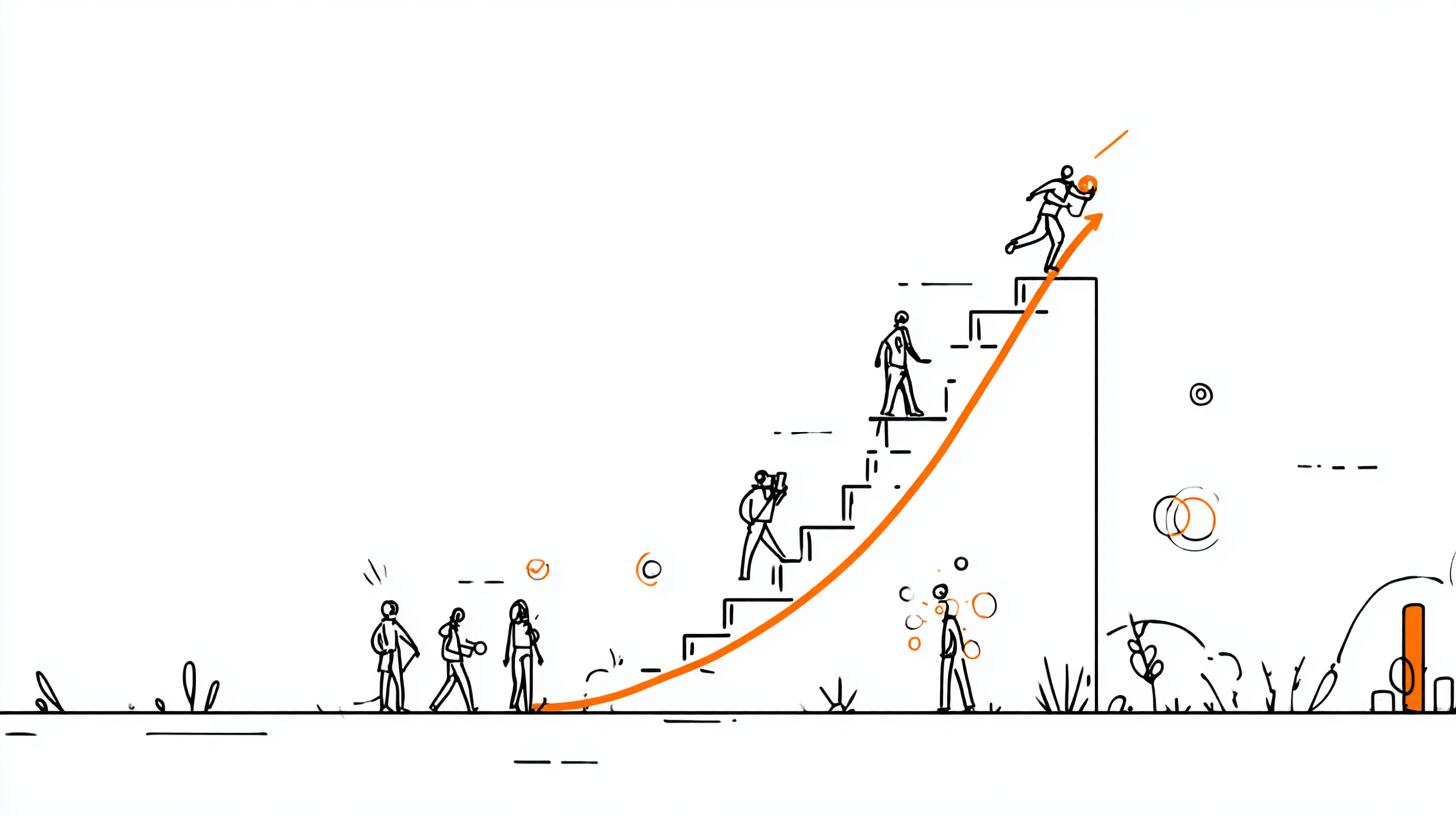Productivity is never linear
Cutting out two hours often means saving two weeks. Below, we cover why productivity gains can be such a powerful accelerant in Life Sciences R&D. If anything we've written about or built at Kaleidoscope resonates, please reach out!

Last month, we were at one of our customer's offices for their 'tech day' – a session where our teams and preferred partners came together to discuss productivity and collaboration. Our co-founder and CTO, Ahmed, was on one of the panels, and he said something that resonated with the entire audience:
“When we help teams reduce a task from 1-2 hours down to 5 minutes, we're not just saving them 115 minutes. We're actually saving them 1-2 weeks."
What Ahmed was getting at is that, when it comes to productivity, the math is never linear.
The tax on coordination
When a biotech team needs to spend 1-2 hours on something together - reviewing experimental results, planning the next design cycle, assessing partnership data - that task doesn't happen immediately. It happens when everyone can find 1-2 hours in their calendars simultaneously.
If you've ever tried to schedule a meeting with scientists, you know this dance. It’s a slow and frustrating tango of back-and-forth emails and calendar tetris, amidst all the experimental planning. Meanwhile, the task that triggered this scheduling mayhem is sitting there, waiting. The compound that should be prioritized, the assay data that should inform next week's experiments or the partnership decision that should move forward – all of these are critical decisions that should be taken ASAP.
This is the coordination tax that no one accounts for when thinking about productivity improvements. It's not the time spent in the meeting. It's the time between deciding you need the meeting and actually having it.
The productivity cliff
There's an invisible threshold in team productivity that most people don't recognize. Tasks that take less than 10-15 minutes happen immediately. Tasks that require more than an hour of coordinated time get pushed into the scheduling queue.
This creates a productivity cliff. On one side, you have immediate action. On the other, you have coordination delays that stretch days or weeks. There's very little middle ground.
When customers tell us Kaleidoscope saves them "10+ hours per week," the real value isn't just in those 10 hours. It's that we've moved dozens of critical decisions from the coordination side of the cliff to the immediate side.
Instead of scheduling a meeting to "review where we stand on the IND filing," a CSO opens Kaleidoscope and sees exactly which data packages are complete, which are in progress, and which are missing key information. Five minutes, done.
Instead of coordinating with three team leads to "assess our compound prioritization," a medicinal chemistry director pulls up the portfolio view, sees performance across all design cycles, and makes the call. The conversation happens in Slack or Teams that afternoon instead of in a conference room next Thursday.
Each of these transformations moves a decision from "requires coordination" to "happens now." The cumulative effect is that teams operate at an entirely different pace.
Speed compounds value
During the tech day, the customer's CSO painted a picture that made everyone in the room sit up.
"Every month we move faster to market is worth roughly $100 million to our company because of how that translates to the revenue side of our business."
This isn't unique to that CSO’s company. In biotech, time to market goes so much further than beating competition – it's about patent cliff dynamics, market exclusivity windows, and the massive revenue potential of breakthrough treatments. When a drug reaches market even a few months earlier, the financial impact compounds over years of sales.
When we help customers accelerate their annual targets by 2-3 months (which we see regularly!), we're talking about tens or hundreds of millions of dollars in value creation. Ultimately, this acceleration is a direct result of eliminating coordination tax and from moving critical decisions from "schedule a meeting" to "let’s handle it now".
And, of course, there’s the massive impact this time to market has on the patients waiting on the other side.
This is a competitive advantage hiding in plain sight
Most biotech companies are still operating with massive coordination overhead. The companies that figure out how to eliminate this friction operate at a fundamentally different pace than their competitors.
We see this with our partners consistently. The mathematical impact is obvious: if you can make decisions weeks faster, you can iterate months faster. If you can iterate months faster, you can reach milestones quarters faster. If you can reach milestones quarters faster, you can reach market years faster.
This is so much more than just task optimization. It’s the difference between companies that coordinate and companies that act. And in biotech where every month matters and every decision builds on the last, that difference is huge.
Kaleidoscope is a software platform for biotechs to robustly manage their R&D operations. With Kaleidoscope, teams can plan, monitor, and de-risk their programs with confidence, ensuring that they hit key milestones on time and on budget. By connecting projects, critical decisions, and underlying data in one spot, Kaleidoscope enables biotech start-ups to save months each year in their path to market.
